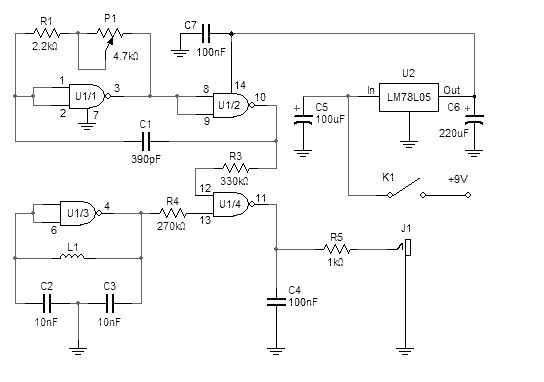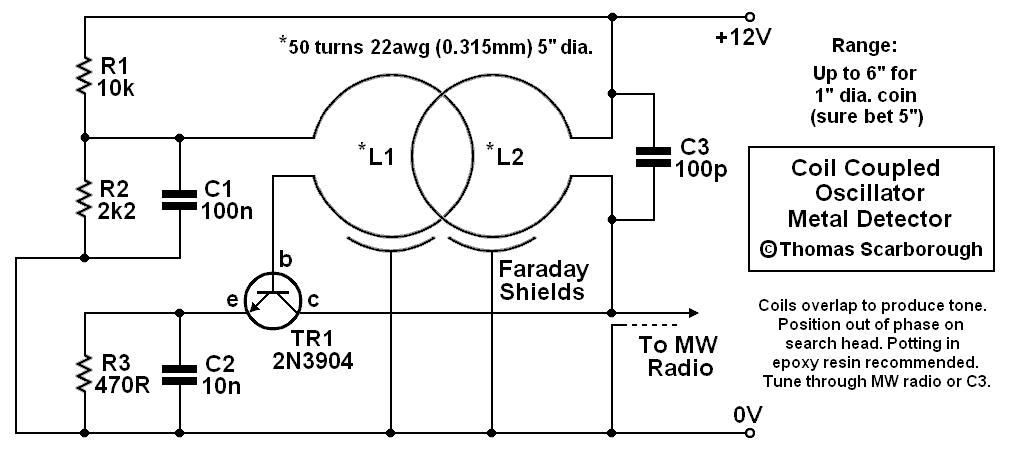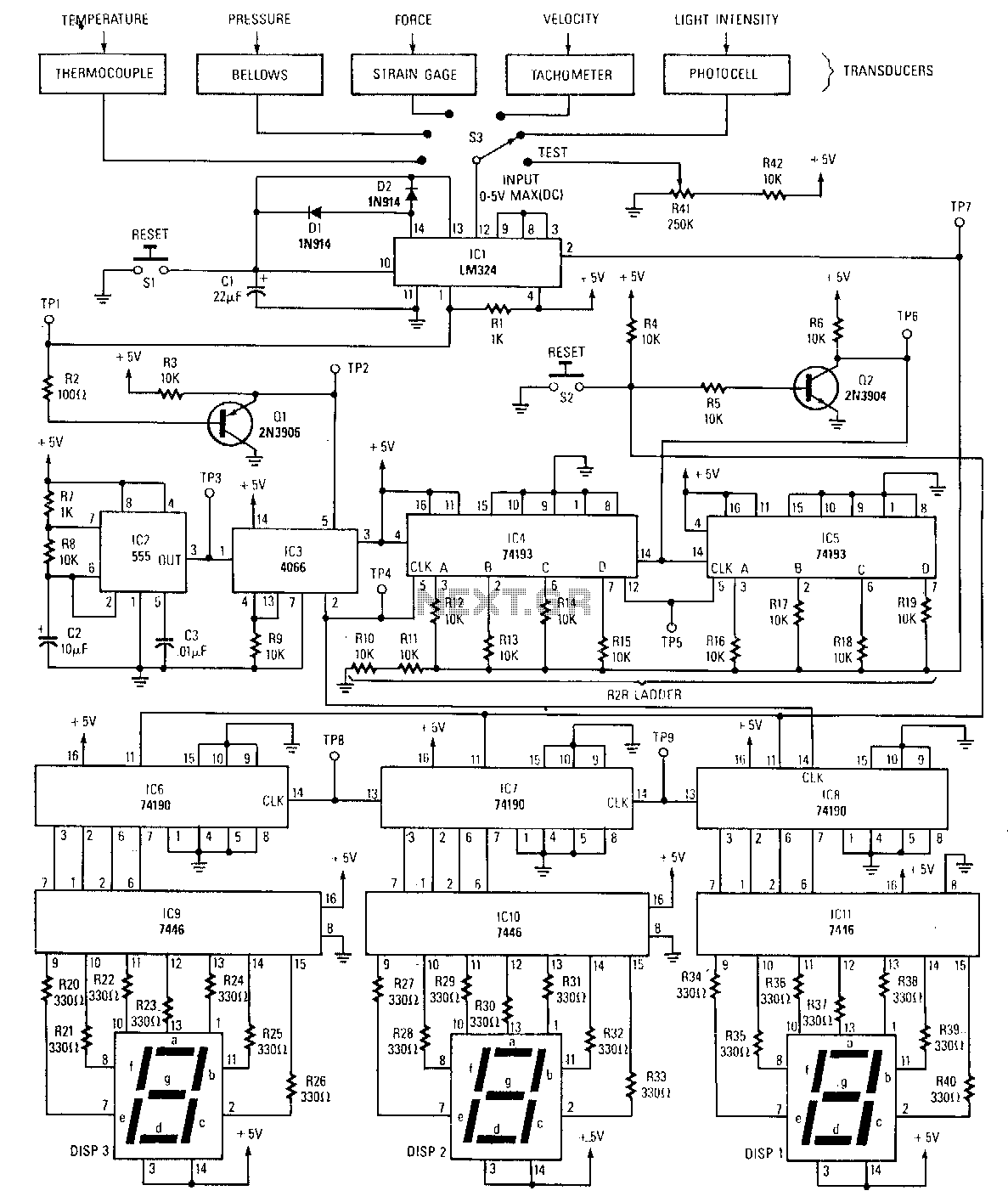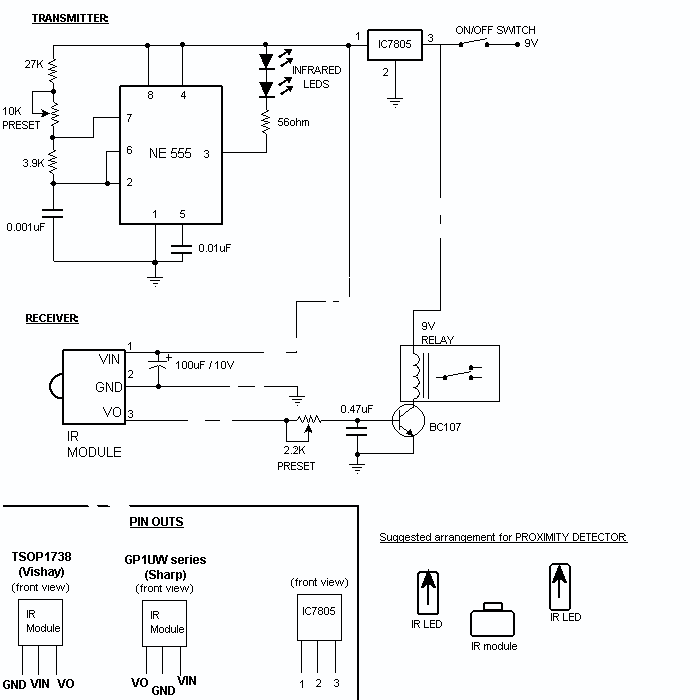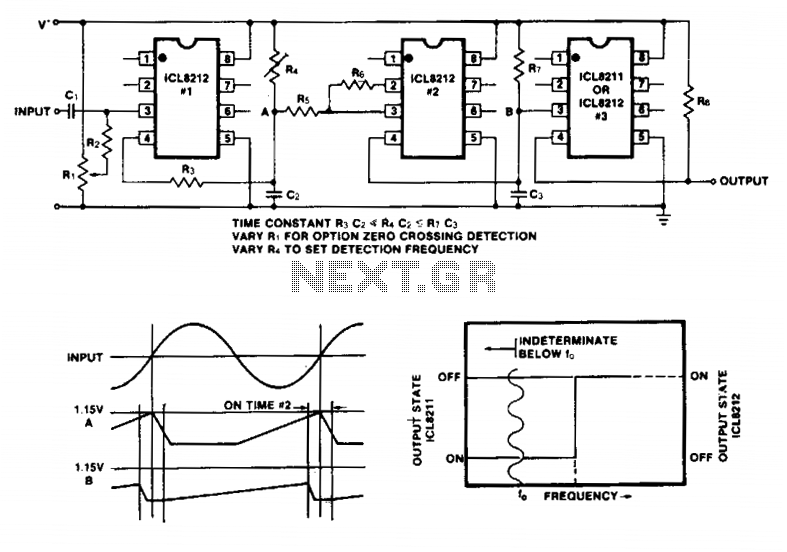
Duty-Cycle Detector

This circuit monitors the duration of an incoming pulse. If the incoming pulse is shorter than the set value (VAR1), the output of U1B remains high. Values are provided for a 1 to 2 microsecond pulse.
The described circuit functions as a pulse-width discriminator, which is critical in applications where timing and pulse duration are essential for signal processing. The circuit utilizes a comparator or operational amplifier (U1B) to compare the duration of an incoming pulse against a reference value, denoted as VAR1.
In practical terms, when an incoming pulse is detected, the circuit measures the time the pulse remains high. If this duration is less than the threshold set by VAR1, the output of U1B is driven high, indicating that the pulse duration does not meet the required criteria. Conversely, if the pulse exceeds the VAR1 threshold, the output state of U1B may change, depending on the specific design of the circuit.
The circuit can be designed to accommodate various pulse widths, with specific values provided for a pulse duration ranging from 1 to 2 microseconds. This adaptability makes it suitable for a variety of applications, including digital signal processing, timing applications in microcontrollers, and pulse-width modulation systems.
To implement this circuit, it is essential to select appropriate components, including resistors and capacitors, to define the timing characteristics and ensure accurate pulse measurement. The use of hysteresis may also be considered to avoid false triggering due to noise in the incoming signal. Overall, the circuit serves as a reliable means of pulse duration detection, with potential applications in telecommunications, data acquisition systems, and other electronic devices requiring precise timing measurements. This circuit looks at the time an incoming pulse is high. If the incoming pulse is shorter than the adjusted (VAR1) pul se, the output of U1B is high. Values are shown for a 1-to 2-/as pulse. 🔗 External reference
The described circuit functions as a pulse-width discriminator, which is critical in applications where timing and pulse duration are essential for signal processing. The circuit utilizes a comparator or operational amplifier (U1B) to compare the duration of an incoming pulse against a reference value, denoted as VAR1.
In practical terms, when an incoming pulse is detected, the circuit measures the time the pulse remains high. If this duration is less than the threshold set by VAR1, the output of U1B is driven high, indicating that the pulse duration does not meet the required criteria. Conversely, if the pulse exceeds the VAR1 threshold, the output state of U1B may change, depending on the specific design of the circuit.
The circuit can be designed to accommodate various pulse widths, with specific values provided for a pulse duration ranging from 1 to 2 microseconds. This adaptability makes it suitable for a variety of applications, including digital signal processing, timing applications in microcontrollers, and pulse-width modulation systems.
To implement this circuit, it is essential to select appropriate components, including resistors and capacitors, to define the timing characteristics and ensure accurate pulse measurement. The use of hysteresis may also be considered to avoid false triggering due to noise in the incoming signal. Overall, the circuit serves as a reliable means of pulse duration detection, with potential applications in telecommunications, data acquisition systems, and other electronic devices requiring precise timing measurements. This circuit looks at the time an incoming pulse is high. If the incoming pulse is shorter than the adjusted (VAR1) pul se, the output of U1B is high. Values are shown for a 1-to 2-/as pulse. 🔗 External reference
Warning: include(partials/cookie-banner.php): Failed to open stream: Permission denied in /var/www/html/nextgr/view-circuit.php on line 713
Warning: include(): Failed opening 'partials/cookie-banner.php' for inclusion (include_path='.:/usr/share/php') in /var/www/html/nextgr/view-circuit.php on line 713
